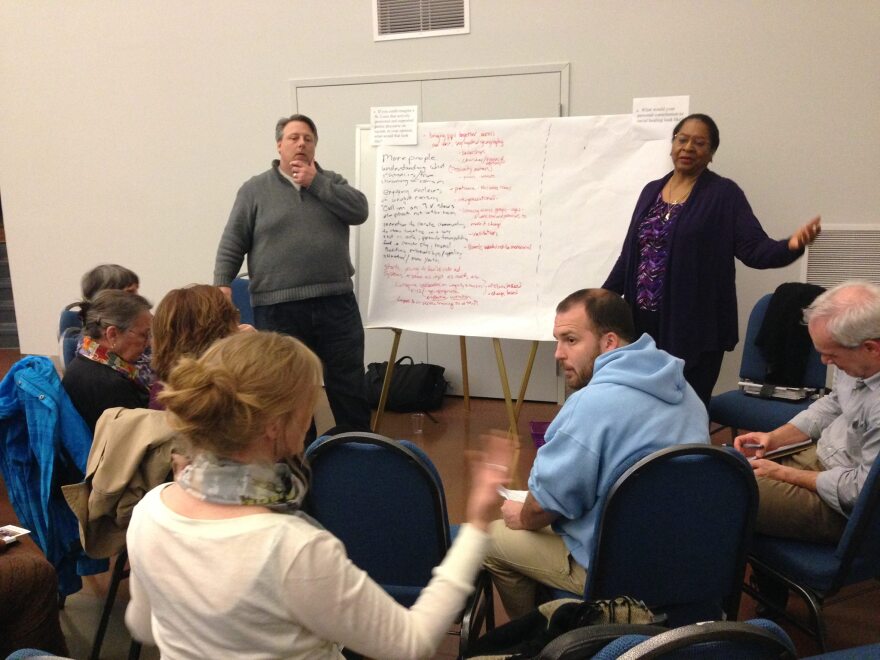The St. Louis area is filled with open wounds. That’s how Affton resident Peggy Keilholz put it when she stepped to the microphone during public comment at Wednesday’s Ferguson Commission meeting.
“Darren Wilson killed Michael Brown Jr. That is a fact which no one disputes,” Keilholz said. “No matter what the criminal justice or civil justice system does or does not do, the death of Michael Brown Jr. is a wound which needs to be healed. Some people who were not peaceful protestors hurled insults, spit and other objects at law enforcement personnel. This is a wound which needs to be healed.”
Keilholz continued, “National, state and local polices of the past helped to create the segregated housing pattern which divides the St. Louis metropolitan area. This is a wound that needs to be healed.”
The eighth Ferguson Commission meeting centered on how to heal those wounds. Attendees discussed reconciliation and racial equity.
To gain a better understanding of how the St. Louis region can reconcile, the commission looked outward.
William Buster, director of Mississippi and New Orleans Programs for the W.K. Kellogg Foundation, spoke to the commission and audience members about the model America Healing uses to repair communities. The America Healing initiative is run by the Kellogg Foundation. The program works to address racial equity and healing. Its projects are concentrated in Mississippi, Michigan, New Mexico and New Orleans.
Buster shared some of the methods adopted by communities under this initiative, including the strategies used by the William Winter Institute for Racial Reconciliation and in programs in New Orleans.
Buster stressed that, although there is value in exploring how other communities are working to rebuild, the methods used for racial reconciliation in St. Louis have to suit the community. “Each community has its own racial rhythm,” he said. “So what works in one community, … the process and steps, may not work in your community so you have to have a clear understanding of what your rhythm is.”
He also said that whatever methods the St. Louis area decides to employ for reconciliation, it will take time.
“I went to New Orleans a few days after Hurricane Katrina,” Buster said. “It will be 10 years ago in September and I’m still there supporting work down there.”
“When the report (Ferguson Commission report) comes out ...that’s really, that’s first floor,” he said. “Then the work really begins.”
Those in attendance broke out into working groups to plot out strategies for healing and discussing race in St. Louis. They were asked the following questions.
• If you could imagine a St. Louis that actively supported public discourse on racism, in your opinion what would that look like ?”
• What would your personal contribution to racial healing look like ?
Many said they wanted a discourse on racism to be honest, extend beyond meetings, be intergenerational and a space to bring people together.

Stuart Slavin of St. Louis says part of the way for the region to move forward and heal is to own its past.
“It’s almost like people don't want to own it,” he says. “They don't want to acknowledge what this community is really about. So I think that has to start the process. To say, yes, we have this past and this is what has existed in St. Louis and still exists and we've got to commit to change.”
Send questions and comments about this story to feedback@stlpublicradio.org.
Support Local Journalism
St. Louis Public Radio is a non-profit, member-supported, public media organization. Help ensure this news service remains strong and accessible to all with your contribution today.

